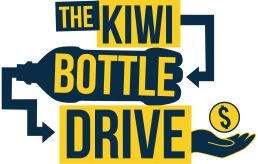Dive into the basics & the details of Container Return Schemes with these handy resources and factsheets
Thanks to our friends from Zero Waste Network Aotearoa, the New Zealand Product Stewardship Council & Reloop.
Container Return: Response to the government’s proposed scheme
SUMMARY
We support the government’s proposed Container Return Scheme (CRS) for beverage containers as an essential step towards a circular economy. The basic design is good. To maximise effectiveness, fairness and efficiency, we support the following changes to the final CRS prior to implementation in 2025:
• dairy milk included (to ensure the CRS is simple and comprehensive)
• an independent managing agency (to lock in best outcomes)
• a higher proportion of depots to Reverse Vending Machines (to maximise co-benefits)
• clear and strengthened proposals to increase refillables (to future-proof the scheme and ensure circularity)
Better recycling, more refill systems and the building blocks of a circular economy
SUMMARY
Currently, about 2.36 billion beverage containers go to landfill and litter each year in Aotearoa. A container return scheme (CRS) involves putting a small, refundable deposit on all beverage containers. A CRS for Aotearoa NZ will:
- increase recycling rates and quality
- drastically reduce the litter problem
- support refill schemes
- increase packaging circularity
- provide cost-savings for municipalities and therefore ratepayers
A Hybrid Return System for New Zealand’s Container Return Scheme (CRS)
SUMMARY
In a beverage container return scheme (CRS), the ‘return system’ is the network of infrastructure and logistics that ensures empty bottles, cans and cartons get where they need to be, and that consumers’ deposits are redeemed. A hybrid return system would be the optimal approach for New Zealand.
The hybrid return system combines the return-to-retail model (e.g. Reverse Vending Machines [RVMs] at supermarkets) with a nationwide network of depots, enabling us to take the best from both worlds. A hybrid approach ticks multiple boxes by:
• increasing consumer convenience
• boosting community wellbeing and resilience
• creating the nationwide infrastructure needed for a low-waste future.
CRS and Refillable Beverages complementary systems to reduce waste and emissions
SUMMARY
Reusable packaging helps to reduce both waste and emissions. A comprehensive, nationwide beverage Container Return Scheme (CRS) would give us a unique opportunity not only to increase recycling rates, but also to boost a return to reuse for beverage packaging in Aotearoa. If we design our CRS well, in the near future we could see more companies washing and reusing glass bottles for milk, beer and fizz – like in the old days – and more drinks sold ‘on tap’ with new technology. To make this a reality, we should factor reusables into CRS design and implementation from the get-go.
For example:
- including glass in the CRS because glass is the material of choice for refillables
- adopting supporting policy and investment to leverage the CRS for reuse
- ensuring any new infrastructure or systems needed for a CRS can accommodate refillables as well as one-way/single- use containers.
What We Waste
This report from Reloop draws on data from 93 countries, over a 20 year period, to examine trends in sales, collection and wastage of drinks containers, where wastage is defined as containers ending up in landfill, incineration, or in the environment. The countries included comprise 81% of the world’s population as of 2019.
In particular, it considers the relationship between wastage rates and the beverage industry’s shift from refillable bottles to single-use drinks packaging, and the measures that can be used to limit that wastage. It looks at the impact the implementation of a deposit return system can have, and the effect of a strong refillable market share – and how both can work together.
Alongside a series of key findings and recommendations, their analysis shows that, on average, the countries with the least wastage per person collect their beverage containers via a deposit return system, both for single-use and refillable containers. Encouragingly, even when adopted alone, both refillable systems and deposit return still show marked impacts on wastage.





